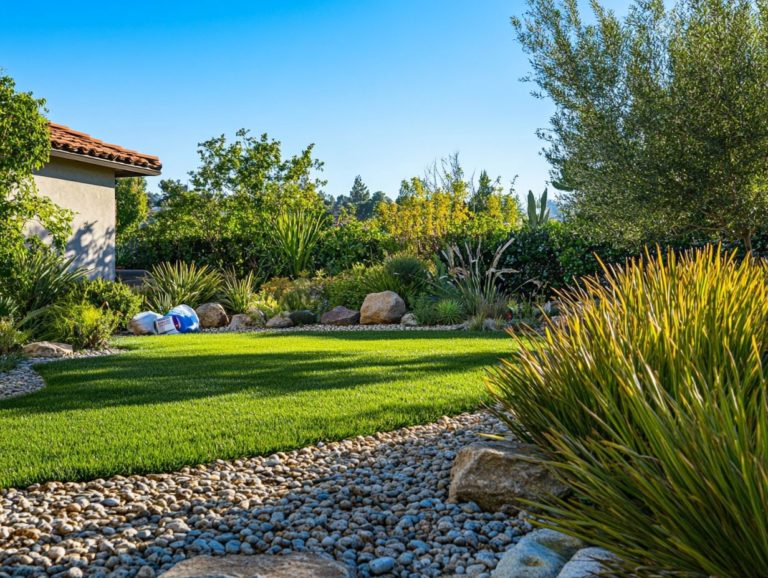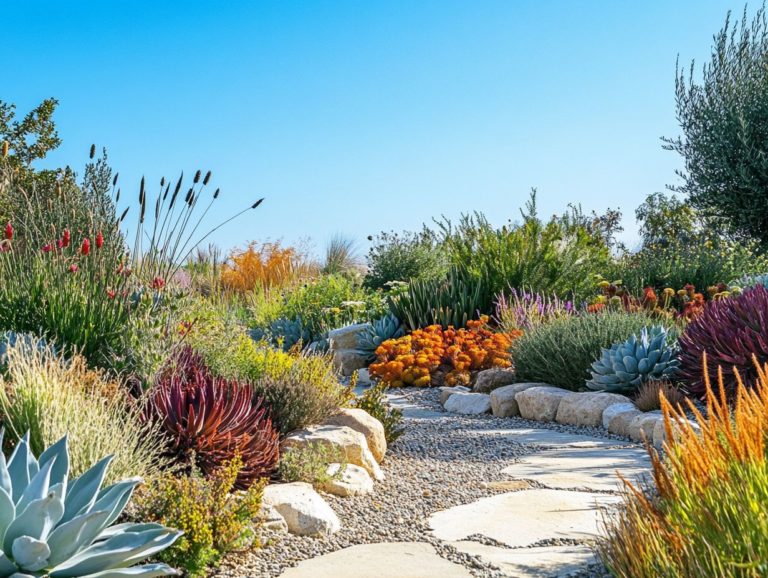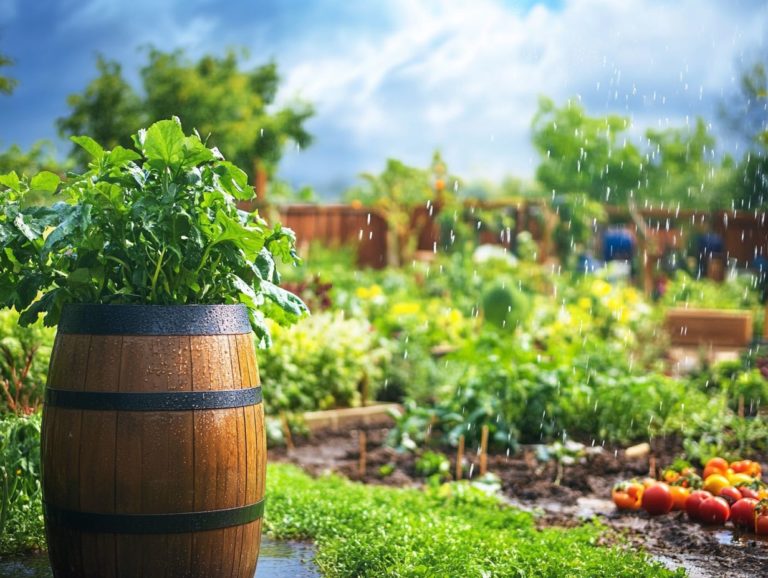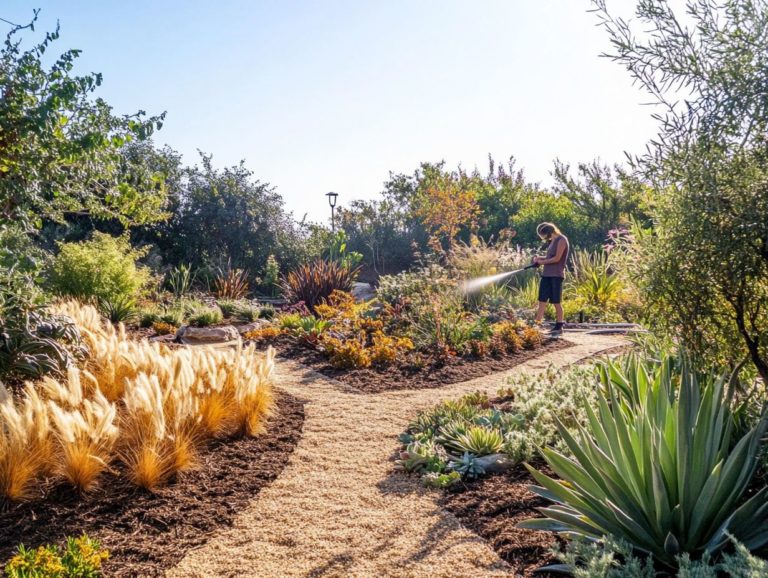Creating a Drought-Resistant Vegetable Garden
Drought can present a formidable challenge to your vegetable garden, testing the skills of even the most experienced gardeners.
Grasping the concept of drought and its impact on plants is essential for refining your gardening practices. This article will guide you through selecting drought-resistant vegetables and preparing your garden.
Get ready to uncover essential tips that will transform your garden into a drought-proof oasis, covering everything from pest control to maximizing your harvest.
Immerse yourself in this guidance to learn how to cultivate a resilient garden that not only survives but thrives in the face of adversity.
Contents
- Key Takeaways:
- Understanding Drought and Its Impact on Vegetable Gardens, Including Soil Types
- Choosing Drought-Resistant Vegetables
- Preparing Your Garden for Drought
- Watering Strategies for Drought-Resistant Gardens
- Other Tips for Maintaining a Drought-Resistant Vegetable Garden
- Harvesting and Preserving Your Drought-Resistant Vegetables
- Frequently Asked Questions
- What is a drought-resistant vegetable garden?
- What are some benefits of creating a drought-resistant vegetable garden with drought-resistant plants?
- How do I choose the right vegetables for a drought-resistant garden?
- What are some tips for maintaining a drought-resistant vegetable garden?
- Can I still have a thriving vegetable garden in a drought-prone area?
- Are there any alternative methods for watering a drought-resistant vegetable garden?
Key Takeaways:
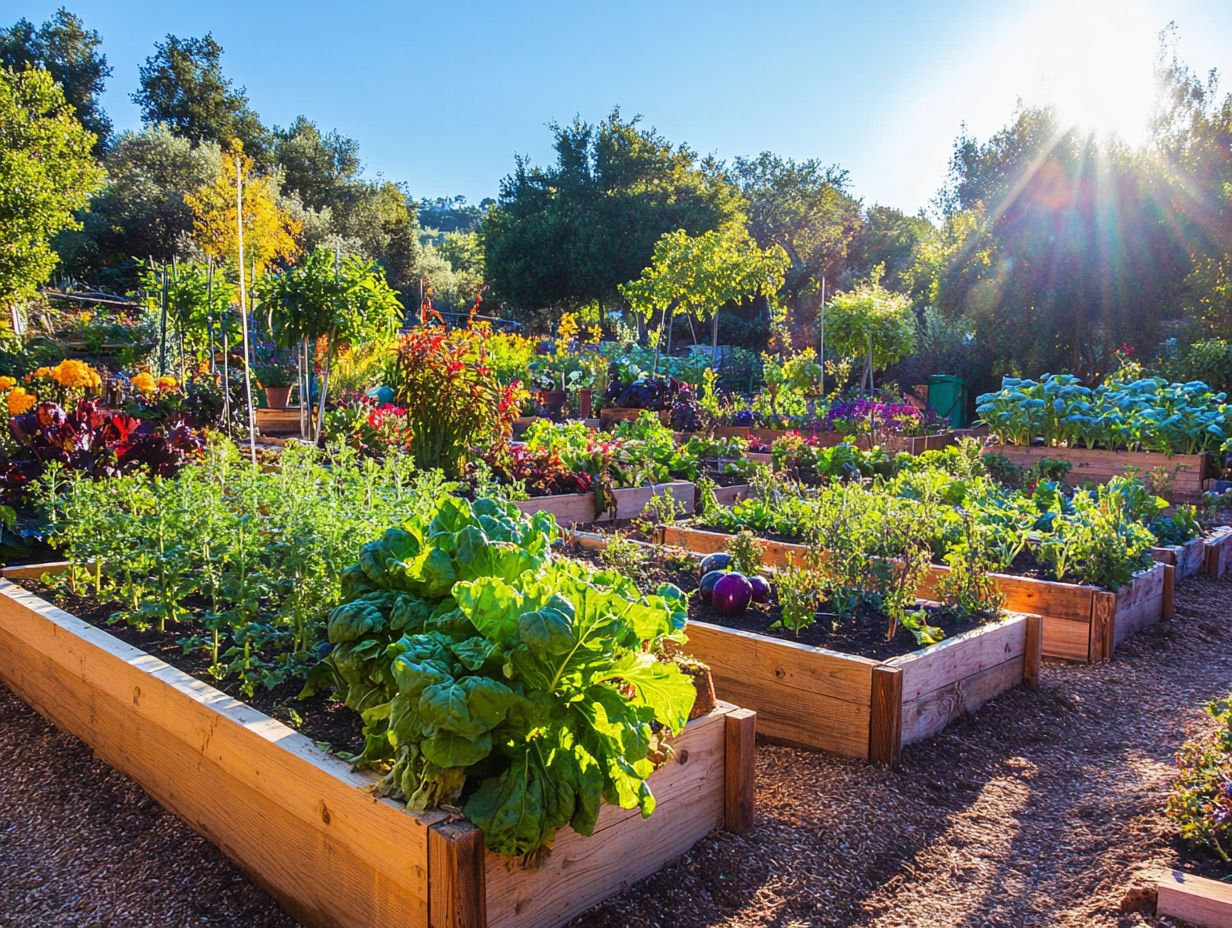
- Learn how drought affects your garden and which plants thrive in these conditions.
- Choose drought-resistant vegetables for optimal growth in dry conditions.
- Prepare and maintain your garden with efficient watering techniques to maximize yield and preserve your vegetables for future use.
Understanding Drought and Its Impact on Vegetable Gardens, Including Soil Types
Understanding drought and its impact on vegetable gardens is essential for you as a gardener striving to maintain a sustainable garden. Learning how to create a drought-tolerant garden is increasingly important in the face of growing water scarcity due to climate change.
Drought conditions can dramatically affect the growth and yield of your vegetables, leading to diminished soil moisture. This compels you to adopt new practices to help your crops flourish under challenging circumstances.
You need to know which plants are drought-tolerant, along with innovative gardening techniques that can alleviate the negative effects of water scarcity.
What is Drought and How Does it Affect Plants?
Drought represents a prolonged spell of abnormally low rainfall that dramatically affects plants by diminishing soil moisture and restricting their access to water an essential element for growth and productivity.
In these trying conditions, plants undergo a series of how they change to manage stress. One adjustment is the closure of tiny openings on leaves, which helps conserve water but also limits the intake of carbon dioxide, ultimately impacting photosynthesis.
To counter these negative effects, plants can activate stress response pathways that encourage root growth to seek out deeper moisture. They can also produce proteins that safeguard cellular functions. Implementing water conservation strategies, like mulching and drip irrigation, is essential for improving soil moisture retention.
Breeding heat-tolerant varieties offers vital resilience against drought. This approach ensures better survival rates and helps maintain agricultural productivity, even amid fluctuating climate conditions.
Choosing Drought-Resistant Vegetables
Selecting drought-resistant vegetables is an essential strategy for ensuring your garden remains productive during times of water scarcity. To maximize efficiency, learn how to plan a drought-resistant garden layout. These carefully chosen plants are uniquely adapted to flourish in low moisture conditions, while offering a delightful variety of nutritious fruits and vegetables.
Best Vegetables for Drought Conditions
Some of the finest vegetables for drought conditions include heat-tolerant varieties like tomatoes, alongside native plants and unique choices such as prickly pear cactus. These selections not only thrive in low-water environments but also contribute to a rich and diverse garden ecosystem.
For example, okra stands out as an excellent option, requiring minimal irrigation while yielding a generous harvest. Leafy greens like Swiss chard and kale exhibit remarkable adaptability to heat and can be cultivated with less frequent watering.
The prickly pear cactus, offering both edible pads and fruit, serves as a low-maintenance addition that enhances the garden’s appeal.
By incorporating these drought-resistant varieties, you can cultivate sustainable practices that conserve water and ensure fruitful yields, even during the driest spells.
Preparing Your Garden for Drought
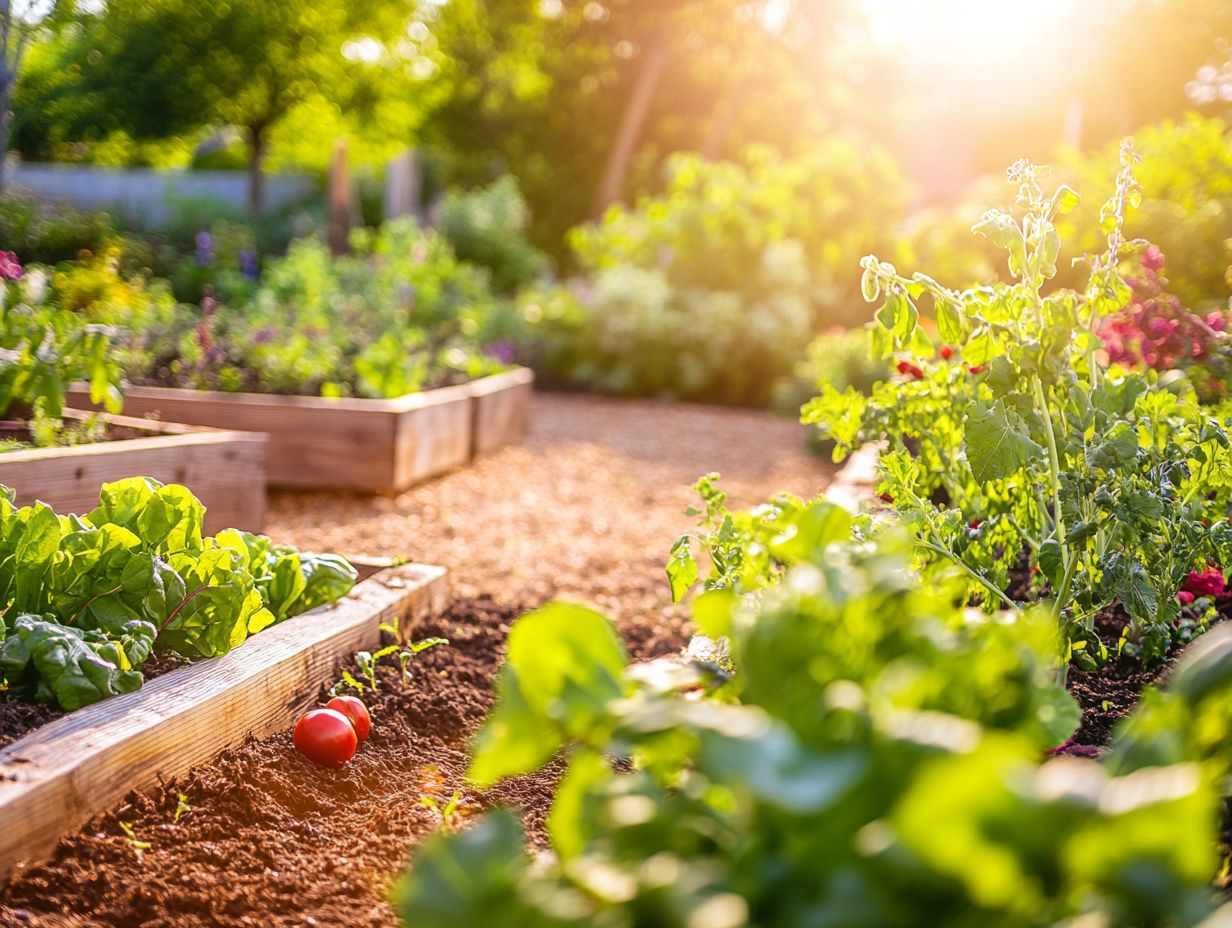
Preparing your garden for drought requires meticulous soil preparation and the implementation of water conservation techniques. This approach fosters the growth of drought-resistant plants and enhances your garden’s resilience against future water scarcity.
Soil Preparation and Water Conservation Techniques
Proper soil preparation and effective water conservation techniques are essential for establishing a sustainable garden. These methods help your plants thrive even in drought conditions while promoting healthy plants.
Use methods like tilling and adding compost to get your soil ready for robust root development and optimal nutrient absorption. Organic matter such as compost and well-rotted manure enriches your soil and enhances its structure and moisture retention capabilities.
Using different irrigation techniques can boost your water efficiency. Techniques like drip irrigation and soaker hoses deliver moisture directly to the roots of your plants, significantly reducing evaporation. These strategies not only support your plants’ vitality but also contribute to a more resilient ecosystem in the face of changing climate conditions.
Watering Strategies for Drought-Resistant Gardens
Implement effective watering strategies for your drought-resistant garden. These techniques help maintain optimal soil moisture levels while promoting water conservation, ensuring your plants thrive even during water scarcity.
Efficient Watering Techniques
Efficient watering techniques such as drip irrigation and soaker hoses are essential for maintaining soil moisture and supporting the growth of drought-tolerant plants.
These methods optimize water usage by delivering it right to the roots while minimizing evaporation and runoff. This ensures that every drop counts. Incorporating methods like rainwater harvesting and applying mulch can further enhance your sustainability efforts.
Act now! Use timers or smart irrigation systems to make your watering even more efficient. This allows precise control based on weather conditions and soil moisture levels. This approach contributes to a healthier garden and fosters a thriving ecosystem overall.
Other Tips for Maintaining a Drought-Resistant Vegetable Garden
In addition to choosing drought-resistant plants and utilizing efficient watering methods, don’t miss out on how to get started with drought-resistant gardening, including effective pest control and fertilization techniques. These strategies will ensure your vegetable garden not only thrives but also stands resilient against the challenges posed by drought.
Pest Control and Fertilization
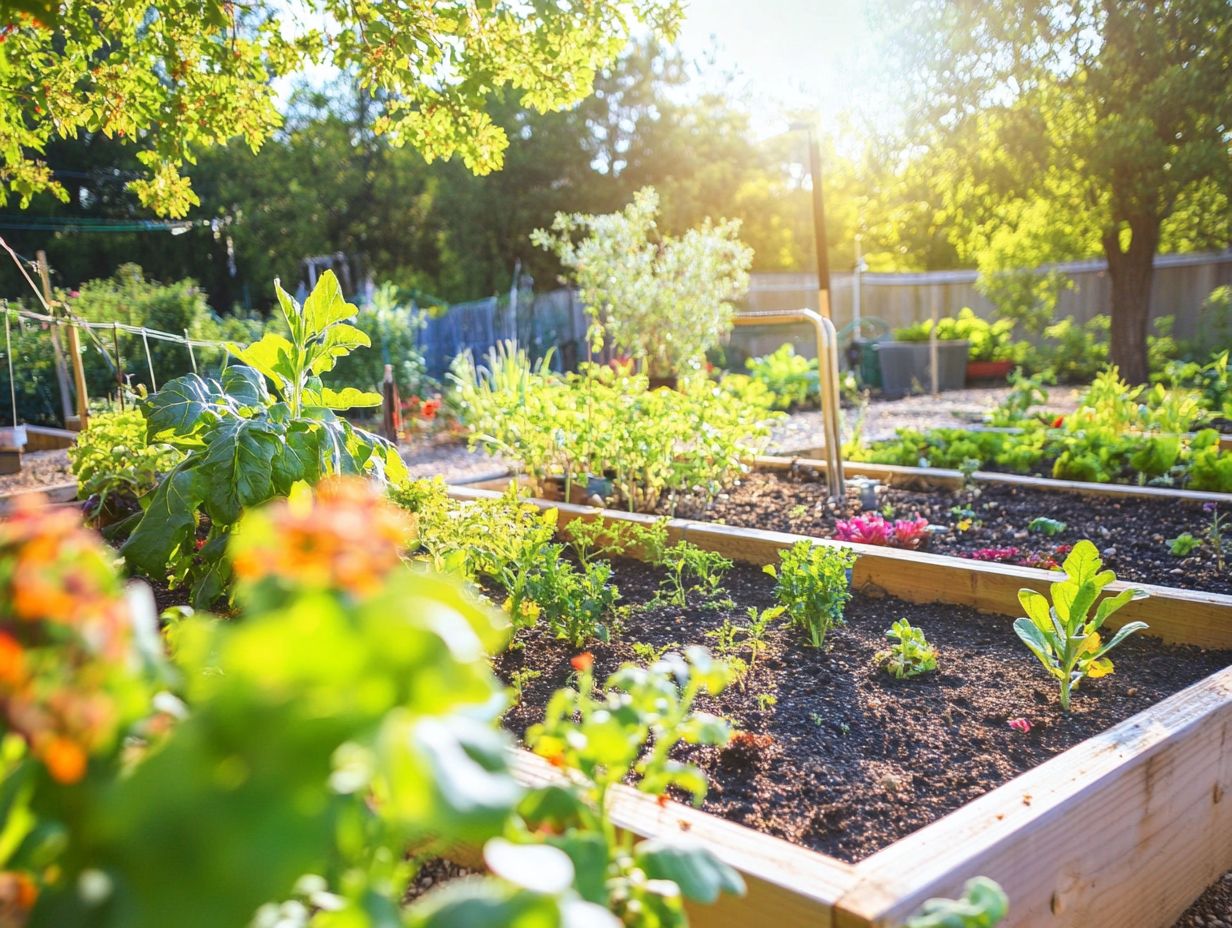
Effective pest control and fertilization are essential elements of a sustainable garden. They ensure your plants thrive and remain resilient against stressors like drought.
Implement a system to control pests naturally. Introduce beneficial insects like ladybugs and use natural repellents like neem oil to curb pest populations without disrupting your ecosystem’s balance.
Consider using natural fertilizers that come from plants or animals, such as compost or worm castings. These not only provide vital nutrients but also enhance soil structure, enabling it to retain moisture effectively, especially for crops like Sweet Potatoes and Tomatillo.
Embrace companion planting by growing specific plants together for mutual benefits. For example, interspersing marigolds among your vegetable crops can repel nematodes and other harmful insects, promoting a robust and flourishing garden even in periods of limited water supply.
Harvesting and Preserving Your Drought-Resistant Vegetables
Harvesting and preserving drought-resistant vegetables maximizes your yield and ensures you have nutritious produce readily available during challenging drought conditions. Additionally, creating a drought-tolerant landscape contributes to sustainable living, helping you thrive in adversity.
Maximizing Yield and Storing for Future Use
Effectively storing drought-resistant vegetables is crucial for maintaining your garden’s productivity and ensuring a steady food supply throughout the year. Employ strategies like precise harvesting timing and careful handling during the process to enhance your output.
Observe when your vegetables reach peak ripeness to preserve their best flavors and nutrients. After harvesting, use various long-term storage methods such as freezing, canning, or dehydrating to keep your crops fresh for months. Utilizing airtight containers or vacuum-sealing techniques can extend their shelf life and prevent spoilage.
Combine these strategies to boost your harvest and savor the fruits of your labor well beyond the growing season.
Watch this video for more tips!
Frequently Asked Questions
What is a drought-resistant vegetable garden?
A drought-resistant vegetable garden is designed to withstand dry weather without needing frequent watering. For those looking to conserve water, establishing a drought-tolerant garden is ideal, especially in areas that experience droughts.
What are some benefits of creating a drought-resistant vegetable garden with drought-resistant plants?
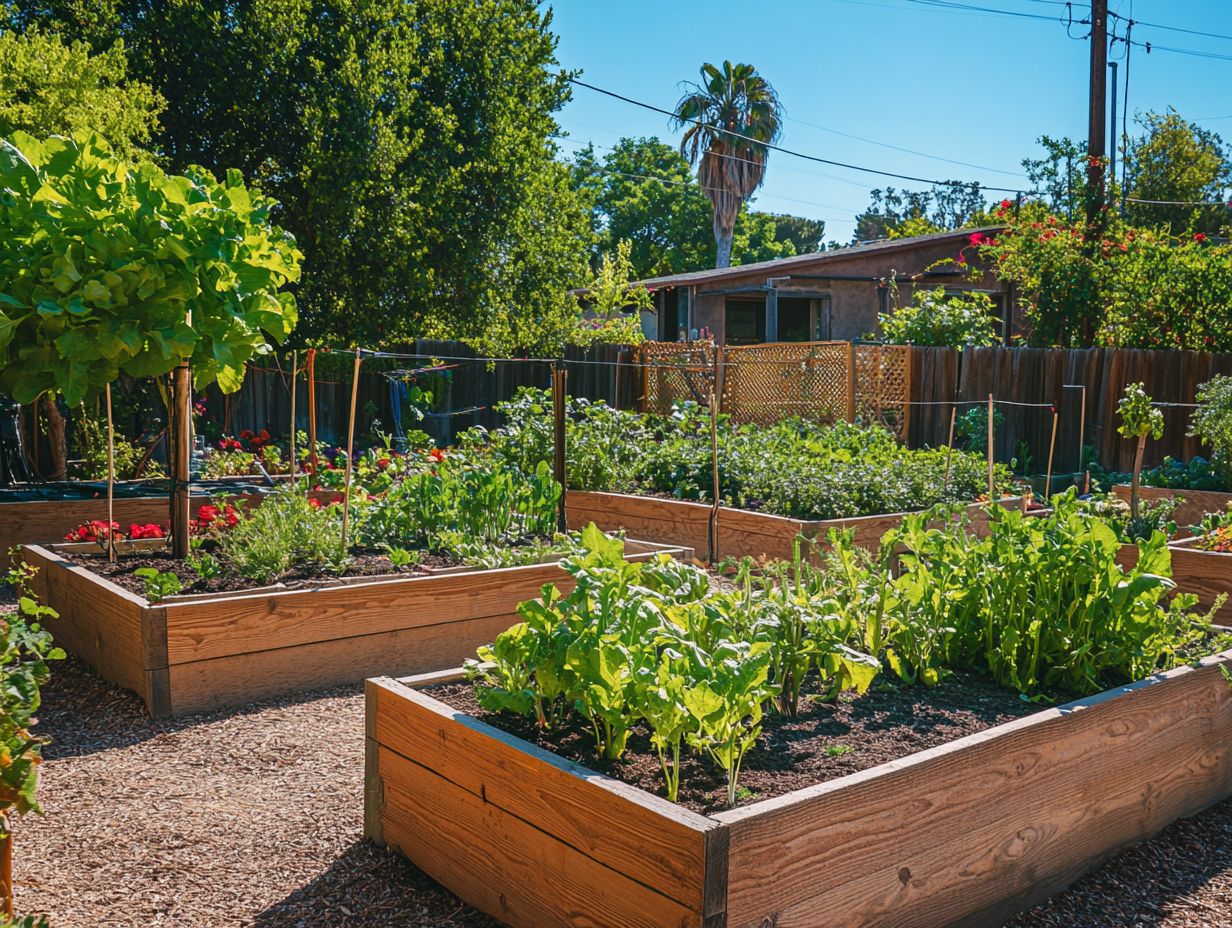
Creating a drought-resistant garden offers many benefits. It helps conserve water, reduces water bills, and lowers maintenance needs. These gardens are also environmentally friendly and promote sustainable gardening practices.
How do I choose the right vegetables for a drought-resistant garden?
Select naturally drought-tolerant plants, such as tomatoes, peppers, eggplants, and leafy greens like kale and spinach. Avoid heavy water users like melons, cucumbers, and squashes.
What are some tips for maintaining a drought-resistant vegetable garden?
To maintain a successful drought-resistant garden, mulch regularly to retain soil moisture. Use drip irrigation or a watering can instead of sprinklers to minimize water usage, and plant in raised beds for improved drainage. For insights on enhancing your garden’s resilience, explore the future of drought-resistant gardening. Regularly check soil moisture levels and adjust your watering schedule as needed.
Can I still have a thriving vegetable garden in a drought-prone area?
Yes! With proper planning and maintenance, you can enjoy a bountiful harvest of various vegetables even in drought-prone areas by following creating a wildlife-friendly drought garden techniques.
Are there any alternative methods for watering a drought-resistant vegetable garden?
Absolutely! Consider using rain barrels to collect and store rainwater, utilizing greywater from household activities like dishwashing, and installing a drip irrigation system that targets specific areas of your garden.
Start your own drought-resistant garden today!

